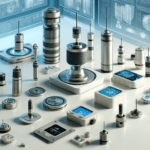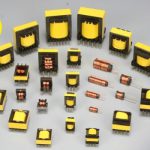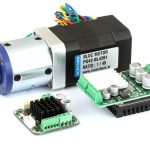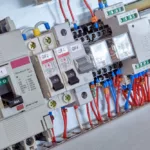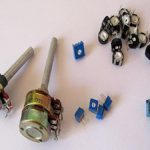
Introduction
Piezo switches are high-performance and versatile electronic switches that offer a compelling alternative to traditional mechanical switches. They are becoming prominent in various applications–from household appliances to controlling complex industrial machinery. But what exactly are they, and why are they becoming increasingly popular? Our comprehensive article covers various questions about piezoelectric touch switches, exploring their workings, advantages, types, applications, and critical selection parameters.
A Brief Introduction to Piezo Switches
Piezo switches, also called piezoelectric switches, are unique types of touch switches that utilise the fascinating world of piezoelectricity to function. These touch-sensitive switches are designed to generate an electrical signal in response to mechanical pressure. They do not have built-in moving parts as compared to traditional mechanical switches that rely on physical contact. Moreover, these electronic switches have built-in piezoelectric panels that offer fast response times and stability even when subjected to mechanical stress. Additionally, a piezo touch switch resists wear and tear, comes with built-in LEDs, and can withstand millions of actuations to suit demanding applications.
What is the Piezoelectric Effect? How Do They Work?
Piezoelectric materials, such as certain ceramics and crystals, exhibit a remarkable property – they generate an electrical charge when subjected to mechanical stress, squeezed, or pressed. This is known as the direct piezoelectric effect.
Their core principle lies in the concept of piezoelectricity. These touch switches integrate a piezoelectric element embedded within the switch. When pressure is applied to the switch, the piezoelectric element deforms slightly, generating a small electrical charge (signal). This charge is then amplified and used to trigger the switch, completing an electrical circuit.
Advantages of Piezo Switches Over Traditional Switches
Piezoelectric touch button switches offer several distinct advantages over traditional mechanical switches, such as:
- Durability: The absence of moving parts within piezoelectric switches significantly enhances their lifespan. They can withstand millions of actuations without being degraded, making them ideal for high-traffic applications.
- Environmental Resistance: Piezo switches are highly resistant to environmental factors like dust, moisture, vibration, and temperature fluctuations. This makes them perfect for harsh environments where traditional switches might malfunction.
- Sealed Design: With no moving parts, piezo switches are designed to be completely sealed, preventing contaminants from entering the mechanism and ensuring reliable operation.
- Robust Sensitivity: Piezo switches can be incredibly sensitive, registering even the slightest touch. This makes them ideal for situations requiring precise control.
- Hygiene: Since piezo switches don’t require physical contact to activate, they are a hygienic choice for applications requiring clean operation, such as medical equipment.
What are the Most Common Types?
Piezo switches are available in a variety of types based on their operational mechanisms, including:
Momentary Piezo Switches
Momentary switches are designed to remain active only while pressure is applied. Once the pressure is removed, the switch returns to its default state. These switches are commonly used in applications where a temporary activation is required, such as in elevator buttons or access control systems.
Latching Piezo Switches
Latching piezo switches, on the other hand, maintain their state even after the pressure is removed. A subsequent press is required to change the switch state again. These switches are useful in applications where sustained activation is needed, such as in lighting controls or power switches.
Customisable Piezo Switches
Many manufacturers offer customisable switches that can be tailored to specific requirements. These switches can be designed with different shapes, sizes, and actuation forces, making them suitable for various applications.
Critical Considerations for Choosing the Right Piezo Switch
When selecting a piezo switch, consider the following factors:
- Application Environment: Ensure the switch is suitable for the conditions it will be used in, such as temperature, humidity, and exposure to elements.
- Type of Switch: Determine the switch type for your application (latching, momentary, or customised).
- Size and Design: Choose a switch that fits the physical and aesthetic requirements of your project.
- Electrical Specifications: Ensure compatibility with the voltage and current requirements of your application.
- Actuation Force: Consider the required force to activate the switch, which can affect user experience.
- Mounting Style: These switches come in various mounting styles, like surface mount or through-hole. Choose the style that best suits your PCB layout and desired placement.
- Durability and Lifespan: Consider the expected number of cycles (presses) the switch will endure throughout its lifetime. High-cycle life switches are ideal for applications with frequent use.
- Additional Features: Some piezo switches offer additional features like tactile feedback, LEDs, or multiple contacts. Consider if these features are beneficial for your application.
- Manufacturer Reputation and Cost: Always choose reliable manufacturers for guaranteed switches, which ultimately translate into long-term cost-effectiveness.
Exploring the Real-World Applications of Piezo Switches
Piezoelectric switches find versatile applications across multiple environments, including domestic, commercial, and industrial settings. Some typical applications of piezo touch switches include:
- Consumer Electronics – In consumer electronics, piezo switches are found in multiple devices, such as smartphones, laptops, keyboards, remote controls, game controllers, and household appliances.
- Industrial Automation – These touch-sensitive switches are used for multiple industrial applications, including control panels, machinery, vending machines, and equipment interfaces.
- Medical Devices – Piezoelectric switches are prevalent in medical devices, where reliability and hygiene are crucial. They are used in diagnostic equipment, patient monitoring systems, and surgical instruments.
- Security and Access Control – Piezo switches are tamper-resistant and are found in security and access control systems, including keypads, entry gates, and intercom systems.
- Automotive Industry – In automotive applications, piezo switches are employed in dashboard controls, touch panels, and infotainment systems due to their durability and compact form factor.
Final Thoughts
Piezo switches offer a blend of durability, reliability, and versatility, making them an excellent choice for various applications across different industries. Their integral features, including high sensitivity, aesthetics, resistance features, and fast response time, set them apart from traditional mechanical switches. Whether in industrial automation, medical devices, consumer electronics, or security systems, choosing the suitable piezo switches can provide a robust and aesthetically pleasing solution for various projects.







